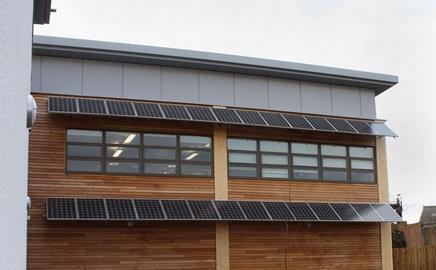We’re going to have to make some important changes in the way we use offices in the future. Here Cyril Sweett director Hugh Mulcahey looks at what the options are – and which is better
01 / Green out-of-town offices vs bog standard high street ones
Commentators have long been forecasting that technology and the rising cost of property will lead to new ways of working, above all, the intensification of the use of office space. Suddenly, partly because of the recession, partly because of the drive towards more sustainable workplaces, a shift seems to be taking place. Desk sharing has become an unexpected consequence of job-saving measures such as part-time working. The amount of traditional office space required is therefore falling. Meanwhile, changing attitudes to travel and the recent growth in video conferencing are likely to further increase the need for less, and different, space.
Organisations that were once sentimentally attached to buildings are now asking whether shareholders, customers or voters will be impressed by this use of resources. The government’s introduction of empty rates on offices has helped some to make the uncomfortable decision to withdraw from buildings.
The fact that consolidation is also likely to win points for sustainability is likely to hasten the process. Government policy requires it, corporate social responsibility programmes push for it, staff and customers want it, and saving carbon through consolidating offices is a good way of achieving it. Although it is becoming easier to build green buildings, the reality is that most of our current stock is going to be with us for some time. The question is, which buildings do you keep? Do you hang on to the green building set in an out-of-town business park or the “bog standard” office in the urban centre? The worked example set out below examines the carbon consequences of a hypothetical example. We assumed:
- Employees travel the national average of 8.2 miles each way to work
- They travel by train to the urban location or by car to the out-of-town site
- There are 300 full-time equivalent staff.
The tables show high and low density occupation assumptions for the two locations together with carbon emissions for a standard urban centre building and a green out-of-town building. We then calculated the total building and travel carbon outcomes for each of the options. The charts below illustrate the findings.
(See corresponding table below)
02 / What this table means
It is not surprising that the less green urban building is the worst offender in terms of emissions, producing nearly 490 tonnes of carbon dioxide in total. What is unexpected is that a bit of bunching up (that is, increasing the density of occupation) produces an overall carbon reduction greatly in excess of the green out-of-town building. The high density levels of occupation illustrated are not particularly adventurous: 10m2 per person could be readily achieved by many organisations. Nor should it be a great stretch to have desks for only 80% of the headcount. Even before the introduction of current levels of flexible and part-time working many organisations have peak desk occupancy of about 40%. Simple bunching up can deliver rapid emission reductions without investment in any fancy new buildings or equipment.
03 / The impact of the car
(See corresponding graph below)
04 / Cars vs offices
The chart above highlights the relative importance of emissions from transport. The paradox is that it is easier to deliver low emission buildings, one or two storeys high, in low density business parks. The economic and practical reality is that it may be better to use existing inner urban stock more effectively. If green buildings become ubiquitous, how we get to them will become the important issue. Proximity to transport nodes, particularly fast rail links, has moved up the priority list.
One further thing to add is that risk management is now back on top of the agenda. The carbon emissions in the worked examples could have been expressed as energy costs. Many occupiers are changing their behaviours not because they want to be environmentally sustainable but because they want to ensure that they are economically sustainable. There is a real risk that an economic recovery will bring renewed pressure on energy prices. Many are planning now for a world where reduced carbon will be an economic necessity.
Downloads
03 / The impact of the car
Other, Size 0 kb






















No comments yet